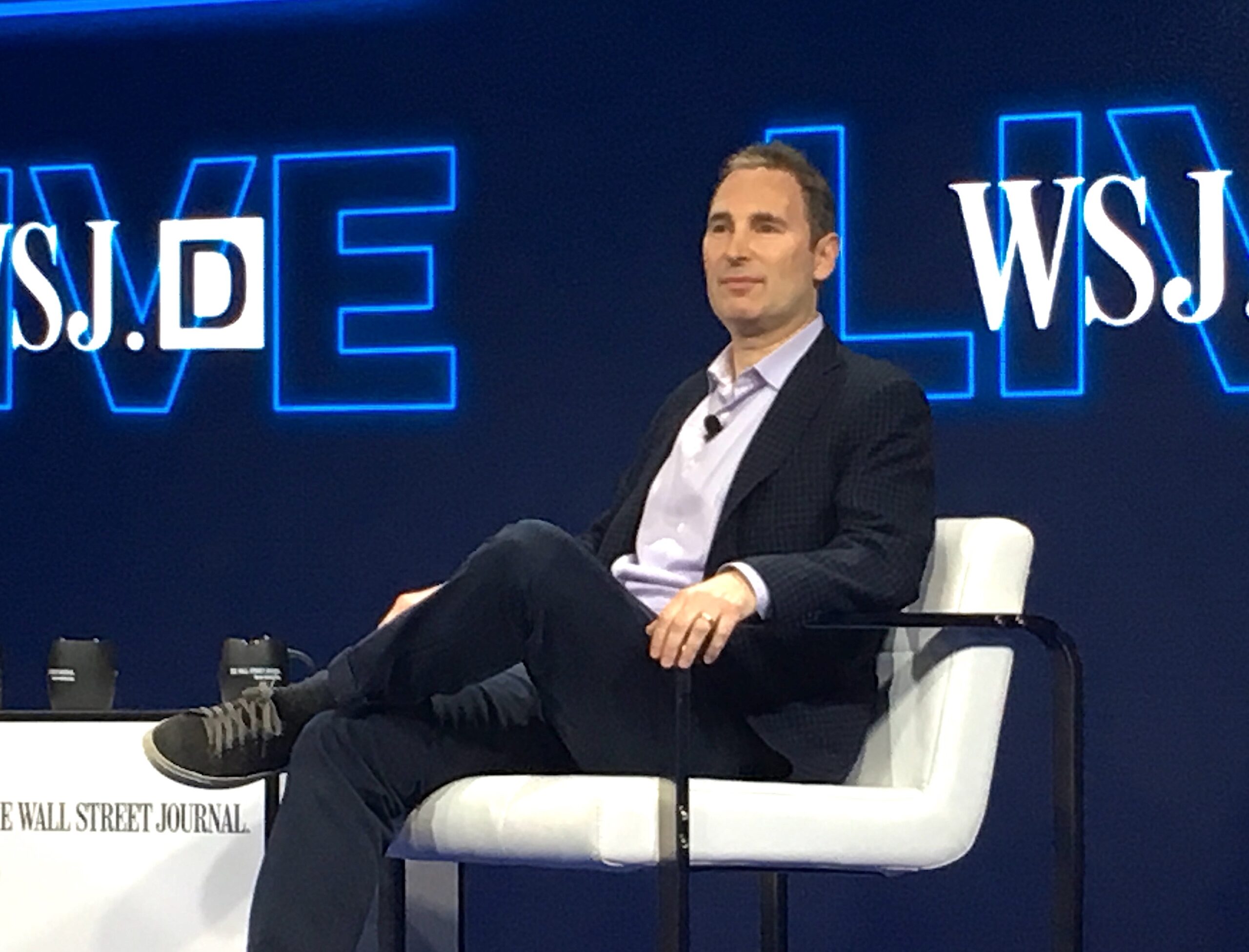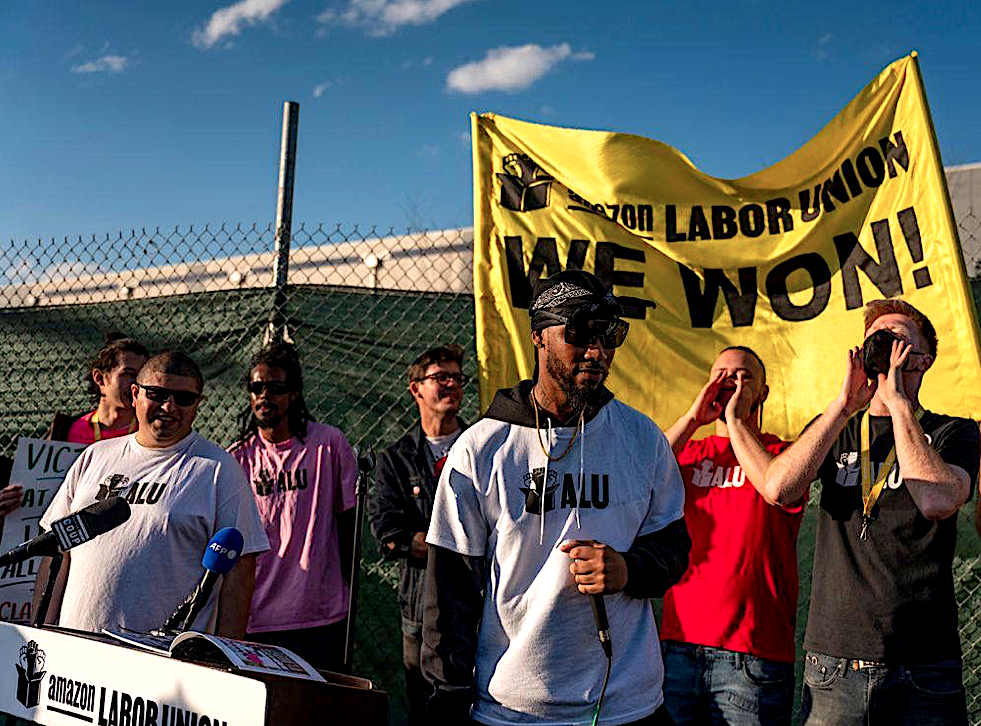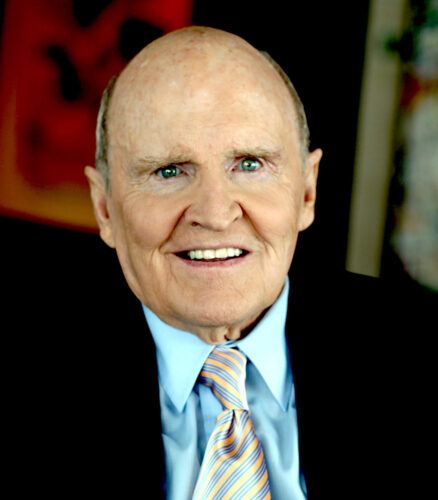The Drucker Institute researchers who authored the article cast unwarranted doubt on Peter Drucker’s views on pay equity, write Sam Pizzigati and Sarah Anderson.

The Peter F. Drucker and Masatoshi Ito Graduate School of Management at the Claremont Graduate University, 2009. (CGU, Wikimedia Commons)
By Sam Pizzigati and Sarah Anderson
Inequality.org

 The Wall Street Journal has just published an article exploring the connection between pay equity and management effectiveness at big U.S. corporations. The co-authors are affiliated with the Claremont Graduate University’s Drucker Institute, named after Peter Drucker, the widely renowned father of modern business management theory and a champion of “enlightened capitalism” for decades before his passing in 2005.
The Wall Street Journal has just published an article exploring the connection between pay equity and management effectiveness at big U.S. corporations. The co-authors are affiliated with the Claremont Graduate University’s Drucker Institute, named after Peter Drucker, the widely renowned father of modern business management theory and a champion of “enlightened capitalism” for decades before his passing in 2005.
The Austrian-born Drucker always considered management a noble calling, a profession essential to the common good. Humankind would only prosper, he believed, if enterprises operated efficiently and effectively. Only skilled executives who respected their employees — and valued their insights — could nurture enterprises this high-performing.
At the heart of Drucker’s thinking about corporate effectiveness was the idea that we ought to be paying close attention to the ratio between executive and worker pay. The wider the gap, he believed, the more toxic the corporate culture, the less successful — as an efficient and effective enterprise — the corporation.
No executives, Drucker wrote in 1982, should make more than 20 times the compensation of their workers. Back then, in the early 1980s, top execs were making about 40 times more than average workers.
“I have often advised managers that a 20-to-1 salary ratio is the limit beyond which they cannot go if they don’t want resentment and falling morale to hit their companies,” he added in an 1998 interview.
The Drucker Institute researchers who penned the July 30 Wall Street Journal article claim that their recent research findings cast doubt on Peter Drucker’s views on pay equity. But a closer look at their numbers in no way justifies that doubt.
They base their analysis on a system they’ve developed for measuring the effectiveness of large U.S. corporations. Every year, The Wall Street Journal publishes a list of the 250 firms that receive the best scores in the Drucker rankings, dubbing them the country’s “Best-Managed Companies.”
This year, the Drucker Institute researchers went beyond their usual analysis to look for patterns between effectiveness and intra-firm pay equity. They gathered data on the ratio between CEO and median worker pay at 482 of the 846 companies in their corporate sample and then divided these companies into four pay-ratio tiers. In the top tier, CEOs averaged 481 times their median worker pay. In the bottom quarter of the Wall Street Journal sample: a pay ratio averaging 85-to-1.
The researchers then examined the relationship between pay-ratio level and their own effectiveness ratings, numbers all based on multiple indicators in five categories: customer satisfaction, employee engagement and development, innovation, social responsibility, and financial strength.
Their key finding?
“The higher the pay ratio,” the Drucker Institute analysts write, “the higher the average scores in our rankings.”
The analysts go on to assert that these findings contradict Peter Drucker’s views. But nothing in their figures undercuts Drucker’s thinking on the dangers of extreme pay divides.
Mischaracterizing Drucker’s Views

Peter F. Drucker, undated. (Jeff McNeill, CC BY-SA 2.0, Wikimedia Commons)
Drucker never posited that firms with unimaginably wide levels of inequality will underperform firms with only wide levels of inequality. Drucker’s fundamental point was that firms with modest levels of compensation inequality will outperform companies with inappropriately wide levels of inequality. All four pay-ratio tiers in the Drucker Institute analysis sport at least quadruple the average inequality levels that Drucker thought appropriate.
No major U.S. corporations today actually follow Drucker’s pay-ratio rule of thumb. Among S&P 500 companies, only four firms reported pay gaps in 2021 of less than 25-to-1. And in each of these four cases, the reported ratio figure tells a highly misleading story. All four CEOs of these companies either happened to be company founders sitting on mountains of personal stock holdings or had pocketed astoundingly large mega-stock grants in recent years.
Three of these CEOs — Warren Buffett of Berkshire Hathaway, Jayson Adair of Copart, and Sundar Pichai of Alphabet — already ranked as billionaires many times over. The fourth, Bobby Kotick of Activision Blizzard, holds “near-billionaire” status, with a $870 million personal fortune.
If instead of looking at the CEOs of these four companies we look at their highest-paid executives, we see a different story. Basing the pay ratio at these four corporations on the gap between median worker pay and the pay of each company’s highest-paid exec generates a corporate pay gap at these four firms that averages more than 200-to-1, a gap over 10 times wider than the gap Peter Drucker believed essential to enterprise effectiveness.
All of the major pay ratio-related policy reforms currently on the table in Washington use the highest-paid executive’s compensation as the numerator. That highest-paid executive may or may not be the company’s CEO.
Conflicting Findings
The Drucker Institute analysts claim they found a “clear and consistent” pattern that links wider pay ratios with higher scores across all five of their effectiveness categories. But that pattern, upon closer observation, hardly appears “clear and consistent.”
In the “employee engagement and development” category, for instance, the quartile with the widest ratios had an average score of 53.8 out of 100, compared to 52.1 for the quartile with the narrowest ratios. Not much of a difference.
We cannot replicate the Drucker Institute research precisely because we don’t know which 482 firms out of their total sample of 846 major firms are included in their pay ratio analysis.
Instead, we conducted a correlation analysis of the full sample for 2021. In this larger group, we actually found a negative correlation between pay ratios and the rankings for “employee engagement and benefits.” In other words, companies with wider pay ratios did not perform better on employee engagement and benefits than companies with narrower ratios.
White-Collar Bias

Amazon CEO Andy Jassy, in 2016. (Steve Jurvetson, CC BY 2.0, Wikimedia Commons)
Digging deeper into the underlying Drucker Institute model of management effectiveness, we found still more contradictions that skew the results of the institute’s pay-ratio analysis.
Astoundingly, Amazon ranks second on their list. This at a time when low-wage workers are drawing unprecedented attention to charges of mistreatment by the giant retailer. So serious are Amazon warehouse employees’ concerns that they are attempting to unionize in at least five states — despite intimidation tactics by their bosses.
How could a company like Amazon get such a high score? A closer look at the “employee engagement and benefits” category in the Drucker model reveals a bias in favor of white- collar employees over low-wage workers. Five of the six data sources in this category are Payscale and Glassdoor surveys that employees answer voluntarily. These surveys disproportionately reflect the views of white-collar workers. (Think Amazon software engineers and program managers — not warehouse workers and delivery drivers who are hustling all day, away from computers.)
The sixth data source in the employee category is drawn from CSRHub. A spokesperson for that company could only tell us that they use “an array of sources” that “change for each source” and that only subscribers are able to see what sources impact their scores.
This white collar bias could hardly be more unfortunate at a time when the dissatisfactions of low-wage workers at many companies across the country are driving both sky-high employee turnover rates — at a high cost to corporate bottom lines — and a surge in unionization campaigns.
According to Pew Research polling, sizeable majorities of workers who left their jobs in 2021 have a seriously low regard for how their former corporate employers engaged with them. Some 63 percent of these workers cited low pay as a prime problem at their former employer, with 63 percent seeing no opportunities for advancement and 57 percent feeling disrespected at work.
Peter Drucker would have seen today’s surge in union organizing as a hopeful response to the absence of adequate “employee engagement and benefits” throughout our current corporate economy.

Chris Smalls, resident of the Amazon Labor Union, holding microphone, during celebration of the vote to unionize at a Staten Island, New York, facility. (Amazon Labor Union)
The Drucker Institute itself has acknowledged Drucker’s belief in the “crucial and fundamental role” of labor unions as a countervailing power. A recent Biden administration study reinforces this view, finding that corporate labor practices that undermine worker bargaining power hold back “the entire economy, inhibiting innovation, increasing prices, and curbing economic growth.”
The Drucker Institute also gives the “employee engagement and benefits” category roughly the same weight as each of the other four categories in its model. That equal weighting has consequences. If Amazon customers express satisfaction with delivery speeds on their orders, that satisfaction will win Amazon big points in the Drucker Institute rankings — even if those high speeds result from brutal pressures on workers that have led to high injury rates in warehouses and personal injury lawsuits against stressed-out delivery drivers involved in motor vehicle accidents.
Beyond Amazon, Peter Drucker would be shocked by some of the other corporations that landed high on the “Best-Managed” list.
Abbott Laboratories
Also ranking in the top 10 percent of the top 250 “Best-Managed Companies”: Abbott Laboratories, the company now infamous for exacerbating the national baby formula shortage. This past February Abbott had to close its Michigan plant after four infants fell ill — two would die — after ingesting the company’s baby formula.
The September before that shutdown, a Bloomberg news report would later reveal, federal inspectors had “spotted the potential” for the Abbot plant’s baby formula “to become contaminated.” Abbott has since the shutdown agreed to start addressing safety violations and upgrade the plant, “including installing nonporous, easily cleanable and sanitary floors.”
Why weren’t Abbott executives adequately addressing safety concerns before this year’s crisis? These execs, U.S. senators Cory Booker (D-NJ) and Elizabeth Warren (D-MA) charged this past spring, had their attention elsewhere. In 2021, instead of investing in safety and training, Abbott spent over $800 million to buy back shares of its stock and hiked its CEO pay from over $20 million to nearly $25 million, over 250 times what the typical Abbott employee takes home.
Over the last decade, many employees at Abbott have literally had to take themselves home — after Abbott layoffs. U.S. Senator Dick Durban (D-IL) called one of those layoffs in Illinois “not justified by whatever marginal financial benefit might accrue to your company, which is already making billions of dollars in profits every year.”
What would Peter Drucker have made of this sort of corporate behavior? The “financial benefit top management people get for laying off people,” Drucker told an interviewer in 1996, is “morally and socially unforgivable.”
“There is no excuse for it,” Drucker admonished. “No justification.”
The Drucker Institute analysts say they “define effectiveness as Mr. Drucker did: ‘doing the right things well.’” But Peter Drucker would never have considered a company like Abbott to be doing “the right things well.”
The Bottom Line
The Drucker Institute analysts, to their credit, do concede that other reputable studies have found that large pay gaps most certainly do have a seriously negative impact on corporate performance.
We’ve assembled an extensive bibliography of such studies from prestigious business schools, management consulting firms, and even the current treasury secretary.
The Drucker Institute researchers also acknowledge that Peter Drucker cared deeply about the impact of extreme pay divides on social cohesion, not just the impact of these divides on corporate performance, and nothing in their research challenges the validity of Drucker’s concerns about this wider impact.
But, in the end, the Drucker Institute analysis for The Wall Street Journal totally misses the most telling corporate contrast. The institute’s analysis essentially compares corporations with varying levels of outrageously high executive compensation. We can learn much more by comparing how our nation is faring under today’s outrageous executive pay levels with how our nation fared — in the decades right after World War II — amid a much more equal distribution of corporate earnings.
In those postwar decades, the United States experienced a record shared prosperity. While severe racial and gender gaps persisted, more egalitarian economic policies — combined with hard-fought civil rights victories — began to break down these longstanding inequalities. A growing share of working families could for the first time afford their own homes and look forward to secure retirements. Students could attend college in record numbers and graduate without crippling debt.
How things have changed — on all these fronts. The majority of American families today have little economic security — or hope for a better future. The most privileged dominate our economy and our politics. They have perpetuated a business model that has left nearly a third of U.S. families unable to afford a $400 emergency.
All these trends closely track the widening pay divide between the nation’s top corporate executives and their workers. In 1980, at the dawn of the Reagan revolution, the gap between average CEO and worker pay stood at just 42-to-1. Today, that gap stands at 324-to-1, according to the AFL-CIO’s most recent analysis of S&P 500 firms.

Jack Welch in 2012. (Hamilton83, CC BY-SA 3.0, Wikimedia Commons)
We can, most vividly, trace this widening inequality through the prism of a single major corporation.
GE CEO Jack Welch became a prime example of a “celebrity CEO” bent on maximizing profits for himself and shareholders while undervaluing his employees and dodging taxes. Welch ended up fabulously rich, but the fundamental flaws in his approach eventually came home to roost.
In the 1950s, New York Times reporter David Gelles argues in an important new book, officials at the corporate powerhouse General Electric openly boasted about the high wages GE workers were making and how much in taxes the company was contributing to the federal treasury and the common good.
After years of poor performance, GE’s current CEO announced earlier this year that this withered corporate goliath would be breaking up into three pieces.
Meanwhile, a withered United States seems unable to meaningfully address, let alone solve, the crises that confront it. Inequality fuels this incapacity. To be better prepared for future crises, the yawning gaps between CEO and worker pay that underlie our current economic dysfunction need to be addressed.
The hopeful news? A number of reform proposals now floating around Congress and the White House would move the country in a more equitable direction. These reforms include new tax incentives and federal contracting standards that would encourage companies of all sizes and shapes to narrow their pay divides.
Peter Drucker would approve.
Sarah Anderson directs the Global Economy Project at the Institute for Policy Studies. She and Sam Pizzigati have conducted research on executive compensation for more than 20 years. They are also co-editors of the IPS site Inequality.org.
This article is from Inequality.org.
The views expressed are solely those of the authors and may or may not reflect those of Consortium News.

As a recent Amazon retiree (physical security), I do have a bone to pick with the prevailing anti-Amazon sentiment about “high turnover”. In my position I frequently had to review the access badges of hundreds to thousands of employees, and early on was struck by the number of people who had worked at Amazon, left, come back, left again, came back again, etc. One lady who worked in the Fulfillment Centers (warehouses) had come back for the Christmas rush 14 of the last 15 years, that’s not something that you do if you think it’s a terrible job.
I’ve done warehouse work, it universally sucks. Having said that, the Amazon FCs suck less than most, they’re less dangerous than the warehouse positions that I had, the pay/benefits are far better, and Amazon provides free education opportunities to get out of what they openly tell new-hires is a dead-end position. When compared to a similar position at a Walmart, Target, or Kroger warehouse they’re head and shoulders above. They’re shitty jobs, everyone knows it, and the sooner they’re automated the better is the sentiment throughout the company.
For the blue-badge employees, they expect a shit-ton of work out of you and expect you to do it right almost every time. If you can do that the pay is great, you get to work on interesting projects, and your coworkers are some of the smartest people you’ll ever meet. A lot of Amazonians leave and come back repeatedly because of that environment.
Just my $0.02, YMMV.
“To be better prepared for future crises, the yawning gaps between CEO and worker pay that underlie our current economic dysfunction need to be addressed.”
The number one way to accomplish this is through the formation of strong democratic (small d) labor unions. Of course, also part of this would be rallying for serious change in labor laws across the board to make it much easier to organize unions into strong union shops where there are no free-riders.
Drew: Good points, but the political system has to be changed first, as the duopoly of R’s & D’s have kept labor unions down ever since enacting the anti-labor Taft-Hartley Act in the late 1940’s.
As soon as the Dems (allegedly for labor unions) won the White House (Obama), and had a majority in the US Senate and House of Representatives, union officials were confident two things they fought for and hoped would pass were Single Payer health care and EFCA, the Employee Free Choice Act, making it easier for workers to unionize. What happened? The Dronebama, Pelosi, and Harry Reid took both of these items “off the table” saying they wouldn’t have enough votes. Money talks!
The Drucker Institute study might have actually been interesting had they stuck to the 20 to 1 value set by Drucker. I’m sure there are some companies out there–though probably not at all well know and few and far between. Still, its like some “low carb” research study where people eat 130 grams (or more) of carbs per day–totally negating the premise from the get-go. My (by far) favorite Drucker book was “Adventures of a Bystander,” which I read decades ago. It help manage my ego in my early management days. Loved that book….
The real measure of success is how much wealth the real owners of the company gain. Suffering such as shortened lives, illness, poverty, mental problems, industrial accidents, pollution, poor work environments, reduced product quality and so on are all externalized costs to be born by society along with slowly increasing prices. Government also helps out with these costs whenever there is a moment to spare from their usual transfer of public taxes to private hands. (this last per Assange)
Perhaps, the most toxic effect of the widening pay inequality is the poisonous idea that these people actually deserve their pay! For all the harm they do they should be fined not rewarded.
Your admirable report simply testifies to the fact that naked capitalism is pure EVIL, period. It pains all responsible people to read even modern sages of enlightened capitalism like Drucker going the way of Adam Smith. Even in their graves they are made to suffer doctrainal miscarriages by their alleged followers ! By the way, an equitable income gap between the ratio ranges of 10 : 1 and 50 : 1 can be plausibly condoned assuming that a genuine will of social responsibility resides in the billionaire, CEO and top executive classes !
“…genuine will of social responsibility resides in the billionaire, CEO and top executive classes”. The tragedy is that this doesn’t exist anywhere, except perhaps in the rarest of circumstances.
Capitalism really means ‘exploitation’ of all resources necessary to produce the products and services a company sells. And, as everyone knows, ‘exploitation’ is all about paying as little as possible for as much as possible, and in some cases stealing the resources, or not paying at all. So twisted and perverted the mentality has become that individuals and companies are rewarded for these nasty practices, as this articles demonstrates.
A simple solution would be to set the corporate tax rate to the base pay of the lowest paid workers at a company. So set the tax rate for companies with high disparities to 35%. For every dollar above the minimum wage that the company pays its lowest paid workers, the federal tax rate is cut by 1%. So if the company pays its lowest paid workers $10 an hour over the minimum wage, their tax rate is cut to 25%. You would probably have to adjust the numbers, but you get the idea.
Share buybacks were illegal once
Could have been the shortest article in history
Peter Drucker spinning in his grave as Amazon come second in a survey of Management Effectiveness by his own Institute
Hey, companies that employ slave labour will outperform everyone. Let’s get the whips and ankle chains out America!